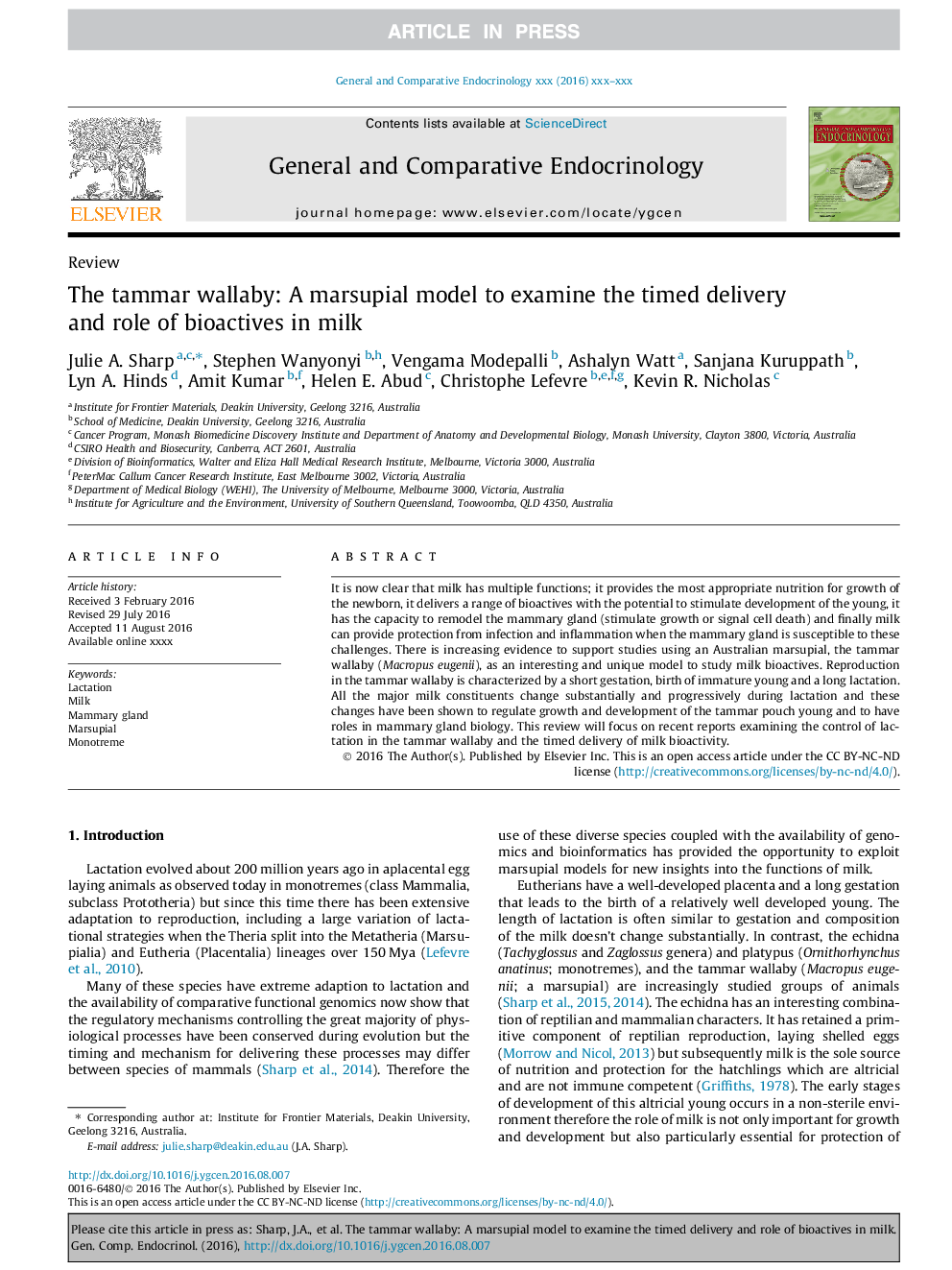| Article ID | Journal | Published Year | Pages | File Type |
|---|---|---|---|---|
| 5587822 | General and Comparative Endocrinology | 2017 | 14 Pages |
Abstract
It is now clear that milk has multiple functions; it provides the most appropriate nutrition for growth of the newborn, it delivers a range of bioactives with the potential to stimulate development of the young, it has the capacity to remodel the mammary gland (stimulate growth or signal cell death) and finally milk can provide protection from infection and inflammation when the mammary gland is susceptible to these challenges. There is increasing evidence to support studies using an Australian marsupial, the tammar wallaby (Macropus eugenii), as an interesting and unique model to study milk bioactives. Reproduction in the tammar wallaby is characterized by a short gestation, birth of immature young and a long lactation. All the major milk constituents change substantially and progressively during lactation and these changes have been shown to regulate growth and development of the tammar pouch young and to have roles in mammary gland biology. This review will focus on recent reports examining the control of lactation in the tammar wallaby and the timed delivery of milk bioactivity.
Related Topics
Life Sciences
Biochemistry, Genetics and Molecular Biology
Endocrinology
Authors
Julie A. Sharp, Stephen Wanyonyi, Vengama Modepalli, Ashalyn Watt, Sanjana Kuruppath, Lyn A. Hinds, Amit Kumar, Helen E. Abud, Christophe Lefevre, Kevin R. Nicholas,
